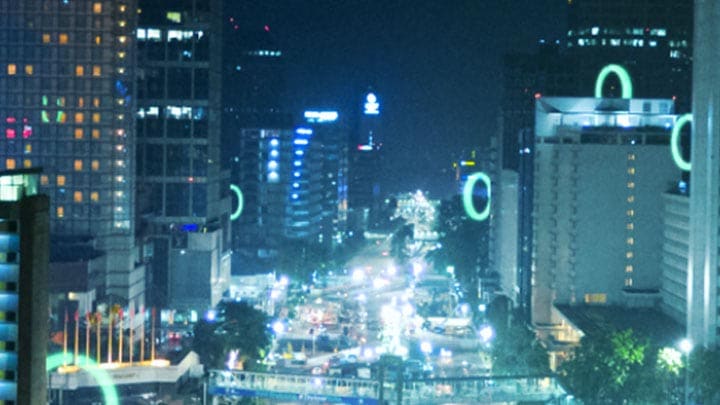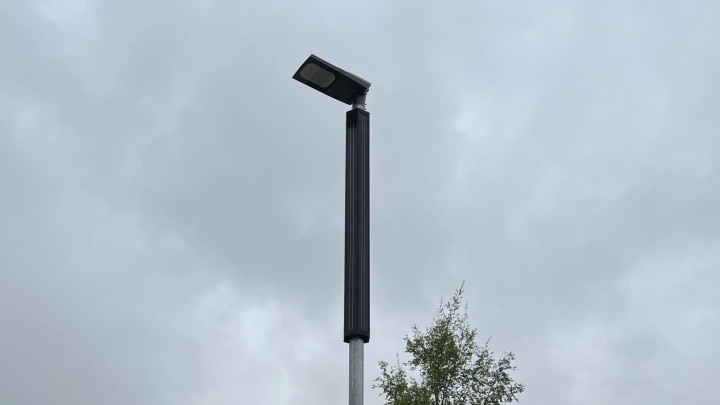August 3, 2023
A major retrofit project has given a new life to the Dublin Port Tunnel. Crucially from a sustainability perspective, the project saw the use of existing materials, so providing all the benefits of an LED upgrade without any waste.
Since opening at the end of 2006, Dublin Port Tunnel has offered much-needed breathing space to the road network above.
Millions of trucks now pass from Dublin Port to the M50 (the main ring-road around Dublin) through the tunnel every year. This twin-bore tunnel which is 4.5km in length with a height clearance of 4.65m subterranean stretch of road was originally lit with 1,800 Philips luminaires, which were still going strong in 2022.
That year, however, a major retrofit project gave new life to the tunnel. Crucially from a sustainability perspective, this used existing materials, so providing all the benefits of an LED upgrade without the waste.
There had been a big change in traffic flows, energy costs, and grid demands over the 17 years of Dublin Port Tunnel’s existence – and it was no different for the lighting.
Seventeen years back, all 1,800 lights in the tunnel had been lit with HPS (high-pressure sodium, 150W/250W/400W) lighting, a perfect solution at that time to provide the tunnel with the level of lighting it required.
HPS lights have been found to be energy-inefficient and emit heat that adds to carbon emissions, making them unsustainable. They also did not have a long lifespan, which added to maintenance costs, tunnel closures, lamp replacement costs, cleaning regimes when compared to the LED alternatives that are now available, meaning the time was ripe to upgrade to a more modern lighting solution.
We all know LED offers an extremely long lifespan relative to every other lighting technology and is more energy efficient relative to every other commercially available lighting technology. On maintenance, too, transitioning to LED made complete sense.
While the tunnel still needs to be regularly cleaned because of the emissions from heavy goods vehicles, the light units now simply need to be wiped clean on the glass exterior to allow for maintained light source.
This has reduced staffing costs and the carbon footprint of movement of staff to conduct works on site. All in all, it has been a very positive move in the right direction.
The Irish government has committed to reducing the country’s emissions by 51% by 2030 and achieving net zero by 2050. This has highlighted the imperative of doing better on reducing emissions in Ireland. To that end, Egis Road & Tunnel Operation Ireland (ERTO), which manages the operation and maintenance of the tunnel, along with the client Transport Infrastructure Ireland (TII), believed that reducing energy consumed in the tunnel would an important step in the right direction.
This could be made true in both performance and in energy savings with a switch to LED. While we work to build a long-term energy infrastructure that’s less dependent on fossil fuels, it is only right that we should also be exploring every avenue simply to use less.
Ultimately, lighting is just one piece of the energy efficiency puzzle, but it is a relatively ‘easy win’. In the case of Dublin Port Tunnel, replacing the old HPS lamps with LED could cut the tunnel’s electricity consumption – and the costs and emissions that come with it – by up to 60%.
When Signify was approached by tunnel maintenance operator ERTO to upgrade the lighting, the R&D team set out to a find a solution that could help go beyond even this energy saving, for example by creating better visibility in the tunnel’s uniform lighting.
The team went a step further in evaluating how the already installed lights could be reused to save TII cost in infrastructure, so the project could contribute to a circular economy.
The team was hopeful that a solution could be found that would bring all the benefits of modern LED road lighting while giving a new lease of life to the fittings, cabling and infrastructure that was already in place.

In the current energy crisis, bringing down energy expenditure is an appealing incentive for public projects. More of these schemes would get off the ground if we can overcome the barrier of high capital investment, which is even more of a challenge when budgets are squeezed.
In the case of Dublin Port Tunnel, the project offered TII a huge advantage – a circular economy-inspired retrofit that would reimagine the materials that were already in place and put them to work in a new way.
The Signify team took the existing set-up as a starting point to design a custom LED tray that would fit seamlessly into the Philips WRTL lantern bodies that had been installed 17 years ago and which were still in great shape.
The benefits of this approach are multiple. First, it’s of course a much more economical approach. By making use of materials already there, we were able drastically to reduce the costs and pass that on to our customer in a very competitive tender. With the custom inserts, we could reuse the original, high-quality housing while retesting and CE marking all of the units to current standards. Through this remanufacturing approach, we were able to reduce capital expenses by an estimated €3m (£2.6m) compared to a new installation.
Just as importantly, this approach is also economical in how we use our natural resources, a factor that’s becoming increasingly important in this age of overconsumption. The past few years have shown us what happens when our supply chains become disrupted. As a society, we need to do a much better job of managing materials for the road ahead.
Another critical factor in the project was speed. With millions of drivers passing through the tunnel each year, it was essential that we keep downtime to a minimum.
With our custom LED trays on hand, installation was exceptionally straightforward, as it did not involve removing and reinstalling everything; there was no need for lengthy closures causing major traffic disruption.
As the trays were made to fit the existing screw holes and connection, each tray took just five minutes to strip out and replace. Installers worked late night and early morning hours for five weeks, minimizing impact on the tunnel and on congestion overhead.
Energy performance was a huge factor in this project’s success but, as touched on earlier, another big objective was to improve the quality of the light source so that drivers would have a clear view when they pass underground.
Drivers who pass through the tunnel will certainly now notice the difference. Colour rendering has improved from a low of CRI 25 to CRI 70, helping road users discern objects much more clearly. The improved light source also makes it much easier for CCTV operators to do their jobs.
Finally, the energy savings have been impressive indeed. The lighting is now using 60% less electricity, saving enough each year to power 300 Irish households. That’s an expected saving of upwards of €4m (£3.3m) in electricity costs (including VAT) over the coming five years.
When we think about sustainable projects, we’re often drawn to the new and shiny. But to reach our climate goals and create a liveable future, it can’t always be about new – we also have to think about what we can achieve with what we already have.
In the case of Dublin Port Tunnel, we’ve used this approach to deliver massive energy savings at a greatly reduced cost, with a fraction of the waste, and with minimal downtime- a project that is all about real tangible change.
Signify (Euronext: LIGHT) is the world leader in lighting for professionals and consumers and lighting for the Internet of Things. Our Philips products, Interact connected lighting systems and data-enabled services, deliver business value and transform life in homes, buildings and public spaces. In 2022, we had sales of EUR 7.5 billion, approximately 35,000 employees and a presence in over 70 countries. We unlock the extraordinary potential of light for brighter lives and a better world. We achieved carbon neutrality in our operations in 2020, have been in the Dow Jones Sustainability World Index since our IPO for six consecutive years and were named Industry Leader in 2017, 2018 and 2019. News from Signify is located at the Newsroom, Twitter, LinkedIn and Instagram. Information for investors can be found on the Investor Relations page.


February 29, 2024
Trafford is the first local authorities to install solar hybrid streetlights